|
To coincide with this week’s “official” release of Raze issue 1, Roger Kean (the Publisher/Managing Director behind the publication and many others) kindly took some time out of his busy schedule to talk about the rise and fall of Newsfield Publications and the legacy it left behind.
|
|
Out-of-Print Archive: How did Newsfield Publications start up?
Roger Kean: Oliver Frey and I moved from London to Ludlow in October 1982, having had friends in the town since 1976 and had been regular visitors. I was still working in London on a one-week-on, one-week-off basis; Oliver was doing illustrations for Oxford University Press and IPC Magazines. Oliver's younger brother Franco came up on several occasions, first bringing with him a Sinclair ZX-81, which we played about with.
|
| Shortly after, he turned up with a 16K Spectrum, which began to look like a serious bit of kit! At the time, shops didn't sell Spectrum games cassettes and since he had been asked by a German to source games for the Spectrum in Germany, he was aware of the growing market. We decided to set up a mail order operation — Crash Micro Games Action — which launched in about April 1983. We produced several black and white, instant-printed catalogues to mail out, utilising Oliver's talents as an illustrator to enliven the pages and help bring the games — just blobs on a screen, really — to life. Ads were placed in Computer & Video Games, Personal Computer Games and others, and sales went reasonably well. At the same time, local Ludlow school kids got wind of it and began calling at the front door to buy direct. And so our first pool of "target market" reviewers was born. |
|
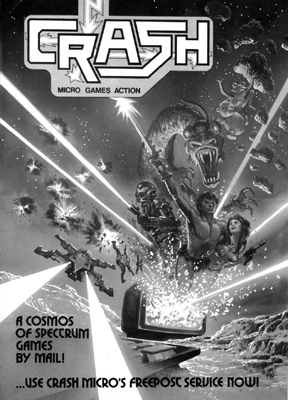 |
Sometime in June I was contacted by the MD of Wells, Gardner & Darton, a magazine distributor, who told me he had shown one of the catalogues to the buyer for WH Smith, who reckoned that if it were made into a real monthly magazine, WH Smith would sell it. And so we set up a proper company to publish. The off-the-shelf company name was Newsfield Ltd, and we never changed it. We planned the first issue for Christmas 1983, but various delays meant the first issue came out in January 84. Our first plan was to keep the price very low, about 35p, and print on newsprint, with only a colour cover, but Smiths weren't happy with such a low cover price and insisted on a minimum of 75p. But that meant they wanted more colour pages inside to support the higher price, and that's what happened. Unfortunately, it put up our production costs, since scanning colour back in the early 1980s was not a cheap option.
The first three issues were typed out on a single Smith Corona electric typewriter (whose auto carriage return had broken, so it had to be manually returned to the left. The typescript, marked up in ink for italics, bold, font size and type, etc, was posted to a London typesetters, who returned the galleys for manual layout a week later. There was no time to reset for any spelling errors... |
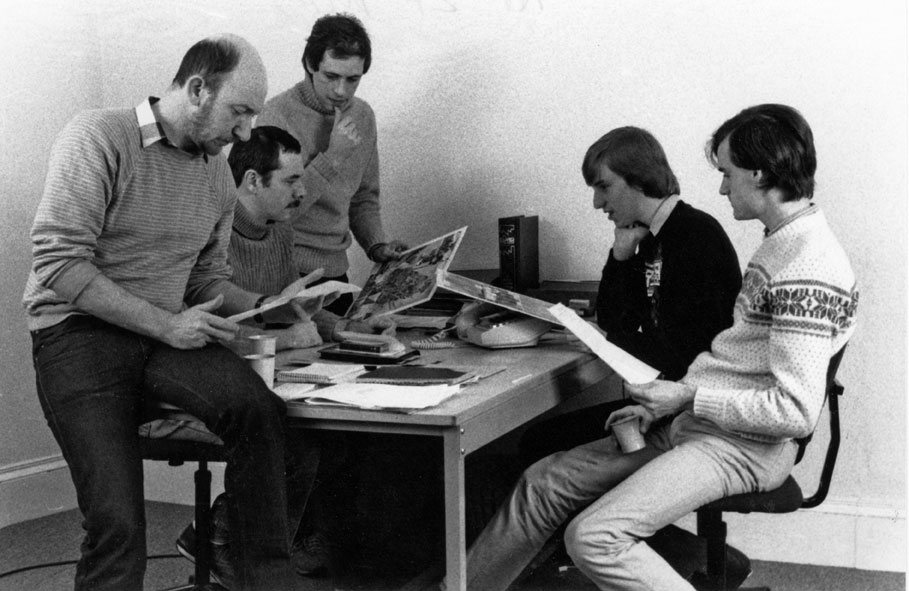 |
| Crash Editorial, late 1984, King Street. From left to right: David Western (production designer), Roger Kean (editor), Oliver Frey (art), Matthew Uffindell (staff writer/reviewer) and Kevin Foster (assistant editor). |
Our system was to farm new games out to our reviewer pool of schoolboys, who filled in a standard form and gave a review and rating. Three of these were used in combination — CRASH's unique contribution to reviewing. The game screens were photographed directly off the monitor, the film processed in-house and printed, the photographs then walked down to the local instant-printer who had a process camera for making the dot half-tones required for printing and these were cow-gummed onto the pre-printed layout sheets along with the cut up typeset galleys. When finished, the pack of layout sheets was sent to a repro house in London and shot to film for the printers to make plates. Between November 1983 and May 1984, Newsfield's employees were myself, Oliver, Franco, Matthew Uffindell and Denise Roberts, who helped with the mail order. Another friend, David Western, joined us in April to help with the increasing tasks of layout. We stopped sending typescripts to London for typesetting when we went electronic with Apricot computers in June 1984, and could use our local instant-printer to output the galleys through his C-Tronic typesetting machine, interfaced (would you believe it) through an Amstrad computer.
OoPA: Crash was an unusual name for a computer magazine — certainly at the time — so where did that come from?
RK: Oliver and I were always keen on short, sharp titles, and I — as a JG Ballard fan — had always liked the title of his Crash novel. Franco was only the first to point out that it was not a favoured terms in the computer world, but that clinched it.
OoPA: Crash — and indeed, all of Newsfield’s magazines — had great, distinctive cover art, often featuring action packed illustrations — a real contrast to what the other magazines were like. Was this the plan from the beginning?
RK: Absolutely. Again, it was Oliver's talent that made that possible. We wanted to get away from the all-techie look of the contemporary magazines. Crash — and the others — were supposed to promote the thrill of games playing, so they had to have exciting covers. Also, we wanted to stand out on the crowded news shelves. You'll note that the early covers usually had a face staring out at the prospective buyer — not a usual thing in those days. |
OoPA:
There were some fairly controversial covers though, Crash's Dun Darach and Barbarian covers spring to mind.
RK: We pushed the envelope on several occasions. Dun Darach raised a few eyebrows among the staff, but by that time the Zzap crew had relocated to Ludlow, and they were a wicked bunch who egged Oliver on. Do you recall the Valentine's Day poster in Zzap? That was a typical Frey reaction to being asked for something "different" to the usual Valentine soppiness. Barbarian did get us into trouble with WH Smith, who threatened to remove the issue after receiving numerous parental complaints, but it sold well, and in the end all we got was a "Don't do it again" letter. Eventually one cover went too far — first cover of Frighteners — featuring Eric the Pie. That was removed and we had to knock up a more anodyne one in a hurry. |
|
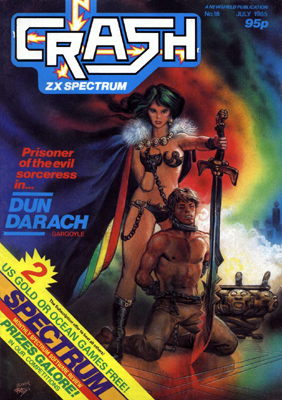 |
| OoPA: Crash was never shy from taking friendly digs at other magazines with the likes of “The ONE BIG Spectrum Software MAG” (a cover headline dig at Big K magazine), “'Is Your Spectrum fit for the Scrapheap?” (a cover headline dig at Your Spectrum) and “Unclear user” (a spoof article on Sinclair User). How did the magazines in question respond to these digs and did some even notice at all? |
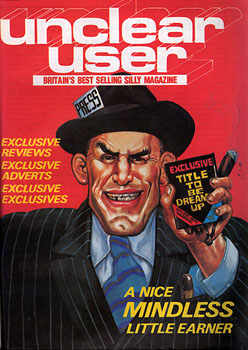 |
|
RK: When we were launching Crash, the people at Dennis Publishing told us we were too late, their Your Spectrum was in the pipeline, so that sparked a rivalry that was usually friendly. Less so with Commodore User, whose owner once referred to Zzap as a "fluffy lollypop magazine". We responded with the issue 15 Leaderboard cover, the girl with her lollypop and all the gawking boys watching her, not the golf. The one that got Newsfield into trouble was, of course, the Unclear user spoof. Owners EMAP served us with an injunction to prevent publication, which they won, but only after an estimated 60% of the print run had already sold. The rest had to be withdrawn and the four pages cut out before going back into distribution. EMAP won the injunction, but not on the grounds of defamation, but — to their lawyer's horror — on the grounds of |
copyright infringement. This gave them a headache to pursue and so it was some eight months later that we came to an out of court settlement which cost Newsfield £60,000. But by then, Crash had soared to new sales heights as a result of what many readers though was a justified attack on Sinclair User. Our problem with the other mags was that, all London based at that time, they regarded Newsfield as — I quote one — "Rural pirates". We felt bound to attack!
OoPA: Circulation figures for Crash rose steadily towards 100,000 at its peak. An extraordinary figure, considering WH Smith (leading UK newsagent) did not think that the magazine would succeed.
RK: Actually, WH Smith were very helpful in the early days, although it's true their buyers never thought it would amount to more than, say 20,000 in sales at the best. The highest Audit Bureau of Circulation (ABC) at just over 106,000 copies monthly was the highest sale of any computer games magazine at the time, and with Zzap not so far behind at over 88,000, we were all thrilled at the success. By then, the staff level was closing on 80, and everyone, including the pool of outside reviewers, felt a part of something big and important. |
OoPA: Did software distributors really feel that if a game got a poor rating in Crash or Zzap!64 it
|
wouldn't be considered for distribution?
RK: I'm not sure they felt they wouldn't find distribution, although we were retained by WH Smith to advise on forthcoming games from which they made stocking decisions. It's certainly the case that by mid-1985 even the most powerful software houses were nervous of a bad review, or even a medium-good one. Franco, as the commercial side of things, had frequent run-ins with fuming MDs over a bad review, but as he always pointed, our reviewers were not professionals, but the real thing, the market; worse, they were mostly kids with no commercial sense but a good eye for a good game. If a game was poor, they wouldn't consider the effect their words might have on the success of a software company. As management, we couldn't alter what they thought and said, and wouldn't anyway. Several times, the threat of |
|
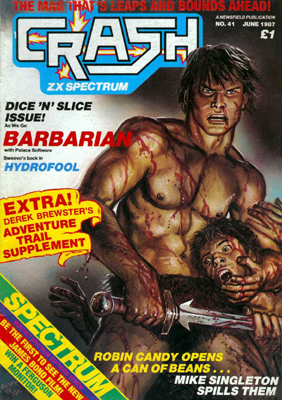 |
| withdrawing advertising was used, but it never amounted to much. If they weren't in Crash or Zzap, they weren't in the games business. |
OoPA: There were a few television appearances for Crash. Can you tell us a little about them?
RK: BBC Midlands News and Central TV News both carried reports on Newsfield, coming over to interview staff and reviewers. The story was, effectively, here's this sleepy market town of Ludlow and it's ruling the business AND IT'S DOING IT BY USING KIDS. Westward TV had a weekly youth magazine programme, and they asked us to go to Plymouth to do a 10-minute live slot. I drove Matthew Uffindell and Robin Candy down there, and both were more nervous of that than the previous news reports. It got bad when the make-up girls came in to paint their lips and powder them down. I was sworn to silence on the matter! However, they both performed like troupers. |
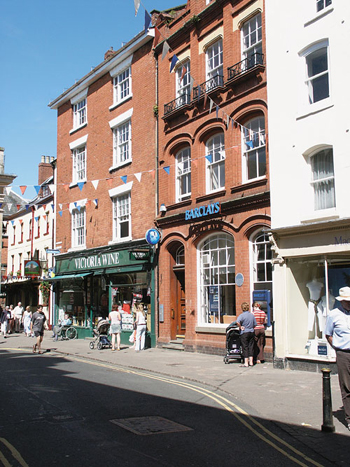 |
|
OoPA: Following Crash‘s success, Newsfield was able to move into the legendary offices in King Street. What memories do you have of your time working in those offices?
RK: Mostly good, some bad. Like any expanding company, we had our ups and downs with staff. Certainly, in the early years it was hardly like being in a working office at all. In addition to the permanent staff, the place was overflowing with school kids after 4pm and at the weekends and during school holidays. The biggest headache was supplying enough computers for them to play on and then trying to enforce some discipline. The grand staircase of three floors was a marvellous place for rubber-band fights, which raged for months, but somehow the work got done. A sense of demarkation was inevitable as the company grew, between the various editorial departments, the art
|
| King Street (photographed in 2006). |
|
department, production department, advertising and administration. This was |
| exacerbated by the fact that by 1987 we were in three different buildings: King Street (editorial, art, production), Broad Street (Advertising) and Gravel Hill (Administration and Mail Order). In the main, the atmosphere was one of light-heartedness combined with very long hours, especially for editorial and art, and King Street was a hotbed of creativity — and pranks. I can remember coming in one afternoon after lunch to sit at my desk to make some phone calls to discover I no longer had a phone. Eventually, by tracing the cable, I found it suspended outside the first-floor sash window, hovering over the heads of Victoria Wine customers below. It was one of those 9-station switchable things that weighed half a ton. No one ever owned up. |
OoPA: Zzap!64 (a magazine dedicated to the Commodore 64) was launched to universal acclaim in May 1985. How did you feel about Newsfield’s new magazine and what happened to the Crash, Bang… name idea (Sprite & Sound was mentioned at one point)?
RK: We'd had our eye on the C64 market the minute we saw that Crash was going to survive and do well. We put out feelers to find a suitable editor and Chris Anderson, then editor of VNU's flashy Personal Computer Games magazine, rang me saying he wanted to work on a single-format magazine. We met and began the relationship that launched Zzap!64. Of course, we intended to follow Crash with "Bang" for a C64 title and "Wallop" for an Amstrad one, but that went out the window, with Chris hating it. Well, it really was a joke... Sprite & Sound was a serious contender, but in the end we thought it didn't have |
|
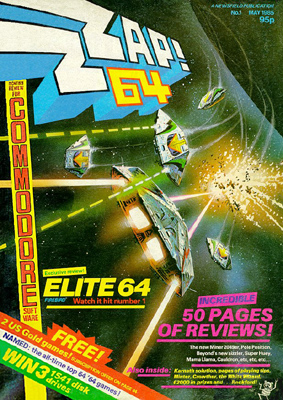 |
| enough of a "thump" to it for the C64, and Chris did like the notion Oliver and I came up with in ZZZZAPP! Chris brought enormous vigour to the whole thing and was set up almost as a one-man band to find his editorial staff and offices in Yeovil, where he lived. In general, everyone at King Street was excited to be launching a new title, and the sense of impending format rivalry was a huge boost. Although Zzap was to be handled at a remove, the layout and artwork was to be done in Ludlow, which meant hiring more art staff and production staff to cope with the increased workload. |
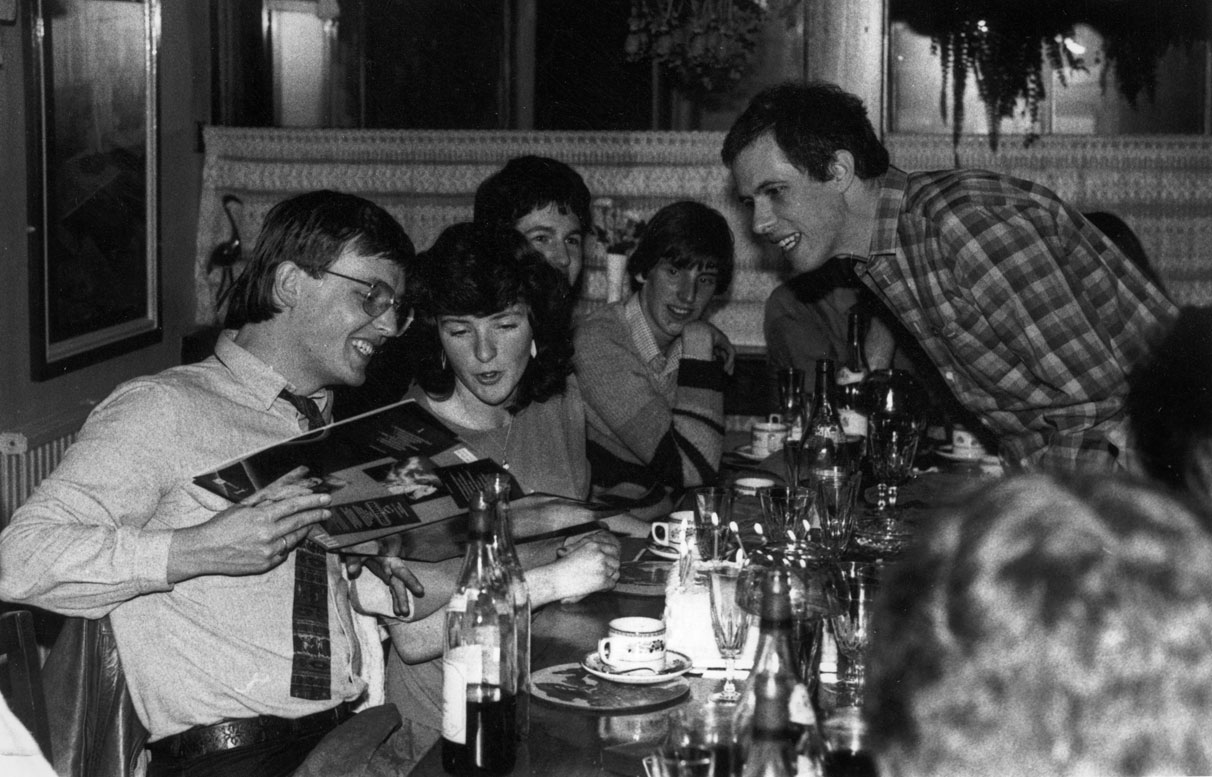 |
| Zzap!64 Launch, 1985, Penny-Anthony Restaurant, Ludlow. From left to right: Chris Anderson (launch editor), Denise Roberts (subs/mail order), Bob Wade (staff writer), Matthew Uffindell and Oliver Frey. |
OoPA: There was a change in editorial staff very early in Zzap!‘s run, with Chris Anderson and Bob Wade leaving, resulting in you having to step in and edit the magazine yourself. What happened?
RK: We tried to make the distance thing work, but it did cause problems and we became aware that the three staff writers, Gary Penn, Julian Rignall and Bob Wade, were not entirely happy with the way — as they perceived it — Chris was running things. They thought he was too dictatorial and that they didn't have the freedom the Crash reviewers seemed to enjoy. In the end, we decided that the operation had to move to Ludlow, which Chris did not want. It was the first major, sad decisions, but we removed Chris and transferred everything to Ludlow. Bob Wade opted to remain with Chris, who famously founded Future Publishing shortly after. |
OoPA: In November 1985, Newsfield expanded to three publications with the launch issue of Amtix!, a magazine dedicated to the Amstrad CPC computers. As with Crash and Zzap!, a very unique name was chosen. Where did the name Amtix! come from?
RK: Finding a good title for our Amstrad launch was a difficult task. Almost a hundred options were tried out — proving that committees are no good at that kind of thing. In the end, the editor-to-be, Jeremy Spencer, used his Amstrad and an anagram program and of all the stuff it spilled out, Amtix stood out as the best. Oliver insisted on adding the exclamation mark. We liked Amtix because it suggested Antics. One suggestion had been to use Amstrad Action, but we had already been warned by Alan Sugar's company that it would not allow the name to be used. Future Publishing ignored the warning and got away with it. |
|
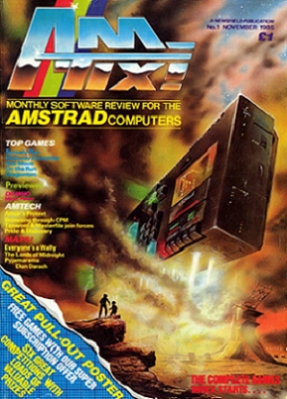 |
OoPA: Unfortunately, Amtix! ended with its final issue in April 1987 and was sold to Database Publications and merged with their Computing With The Amstrad CPC magazine. So, it wasn't quite three strikes in a row with Amtix! (following the success of Crash and Zzap!64), but why sell off Amtix!?
RK: Because, in spite of some heroic efforts, especially by Richard Eddy, Amtix! never really succeeded, either on sales or with advertising revenues. As we were beginning to look towards a multi-format magazine in the near future and even non-computing titles, the drain on financial resources didn't justify keeping it alive, and obviously a sale was a better option than just shutting it down. It was considered a better option to free up its staff for something else. |
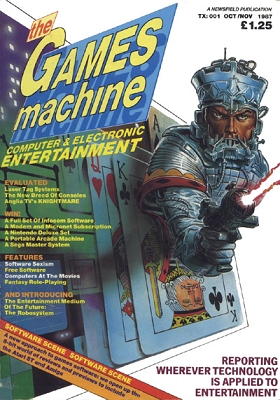 |
|
OoPA: That multi-format magazine being The Games Machine, which was launched in October 1987. What were the reasons for launching such a magazine, considering that Newsfield seemed to excel at dedicated format magazines?
RK: You're quite right, we were better at single-format, but at the time it looked as though Newsfield would lose market share it we didn't expand our coverage to take into account the new machines coming out. It was also, to some extent, a decision driven by Newsfield's expanded advertising sales team. They felt that they hadn't enough to go at with only the two titles (Amtix! having gone). We gave The Games Machine everything, placing Graeme Kidd and Gary Penn in charge as experienced hands, but as it happened, it didn't work out. |
OoPA: What did happen, as the two co-editors, Graeme Kidd and Gary Penn, seemed to disappear?
RK: Gary had already left Newsfield some months before — with Julian Rignall taking over editorship of Zzap! — but we persuaded him back with The Games Machine. There was a lot of tension between the established titles and the new one, especially with two high-flyers in charge and tempers were lost all around, particularly between the photographic department and the editors, and, frankly, no one was impressed with the first issue, so it was Graeme and Gary out, which led to a lot of faction fighting afterwards and a couple of resignations. |
OoPA: Zzap!64 began covering Amiga reviews and even changing the magazine title to Zzap!64 Amiga for its November 1988 issue, all of which seemed to divide opinion amongst the readers. Eventually, coverage of Amiga was dropped after issue 74 (June 1991) and the magazine was a dedicated C64 title again. What were your views on the Amiga coverage in Zzap!64?
RK: It was an editorial decision to include Amiga material, on the basis that the two machines had sufficient in common to justify it. I think it was an error. Again, the market was shifting dynamically, and it was difficult to see whether incorporating the Amiga was for the good or not. We also felt at the time that the Amiga on its own would not justify a single-format title, something I think was correct as enthusiasm for the machine waned pretty quickly. |
|
 |
OoPA: Zzap!64 experienced another big change in editorial when three members of the staff (editor Gordon Houghton, staff writers Kati Hamza and Matthew 'Maff' Evans) leaving during issue 50. Can you reveal what happened here?
RK: The famous "Night of the Long Knives". To be honest, I can no longer recall what led to that incident, other than arguments about costs versus revenues and a background swell from certain sectors that the Zzap team weren't performing well or conforming. I certainly can't absolve myself from being a part of the decision that led to Gordon, Kati and Maff being removed, but after all this time I also can't see why it was necessary. Certainly, Gordon was a fine editor, and all three were hard workers with a sense of the absurd that perfectly fitted the serious-but-madcap tone Zzap had adopted from the outset. |
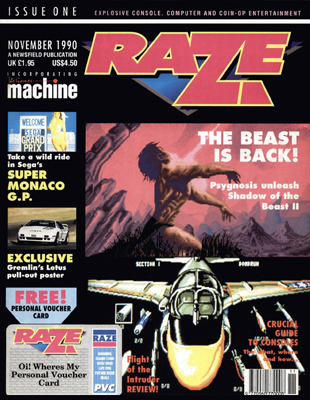 |
|
OoPA: The Games Machine re-launched in 1990 as Raze, a new magazine that would focus on the rising console boom and 16-bit computers. What were the reasons for the re-launch and outsourcing the editorial work to Words Works Limited (which was headed by former-Future Publishing editor Richard Monteiro)?
RK: The relaunch was necessary because The Games Machine hadn't performed very well after its rocky start. Newsfield was also short of experienced editors, hence Richard Monteiro, with whom we had had plenty of prior contact. In fact, although contracted out, Richard spent a great deal of his time at Newsfield's new Case Mill premises for the finishing, artwork and production process (all electronic by then). |
OoPA: The Games Machine did survive, albeit with an Italian version. Did you ever see any of these Italian versions?
RK: Yes, on a regular basis while Newsfield survived. We received a monthly licence fee for the use of the title (nothing big...).
OoPA: During its later years, Crash participated in the 'covertape wars' (sales wise, it seemed vital to include a covertape on a computing magazine at the time). What were your views on the 'covertape wars'?
RK: Awful! Okay, it's easy with hindsight to see what a saddening thing it all was, but the cover-mount wars were on with a vengeance and securing at very low cost the games to go on the tapes was a simple matter for Newsfield, with its long close association with so many software houses. But there's no denying that it turned the magazines into pamphlets with a tape attached. Copy sales and ad revenue were all down, hence the need to cut the pages to fund the cost of tape production. For the editors it was a dispiriting experience. I know, particularly, that Dominic Handy found it a degrading experience, to have finally got his hands on the magazine he had loved for years, to be doing little more than ringing round software houses begging games for the covers. Oliver also hated it, because it destroyed any hope of conceiving an impactive cover design. Frankly, the less said the better about the bloody cover tapes! |
| In part two of the interview, Roger talks about the end of Newsfield, the subsequent resurrection with Europress, leaving the magazine publishing industry and more... |
|
|
|